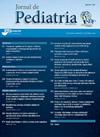对巴西 1463 名口面裂患者进行基因评估。
IF 2.8
4区 医学
Q1 PEDIATRICS
引用次数: 0
摘要
研究目的本研究通过比较巴西各地遗传学中心和治疗中心的数据,深入研究口面裂(OC)患者接受遗传学评估的可及性:这项横断面回顾性研究分析了2008年至2018年期间在巴西颅面畸形数据库(BDCA)登记的1463名OC患者的原始数据,未对年龄或性别进行选择。研究还考虑了截至2023年的研究项目中的诊断检查结果:在1463例典型OC患者中,987例为非综合征,462例为综合征(SOC),10例为非典型OC,3例为未指定OC病例。在 SOC 患者中,获得实验室诊断的平均年龄为 8.5 岁。值得注意的是,在遗传学中心登记的 SOC 病例多于治疗和康复中心(37.1% 对 29%,P = 0.0015)。来自遗传学中心的病例平均年龄为 7.3 岁,而来自治疗和康复中心的病例平均年龄为 10.7 岁(p = 0.0581):无论来自哪个中心,这些数据都突显了综合征群体在诊断方面的延迟和在获得基因检测方面的挑战。鉴于大多数巴西人普遍依赖公共卫生系统,传播这些数据可极大地促进人们对医疗服务的了解。这些见解可以改善公共政策,满足 OC 患者的独特需求。本文章由计算机程序翻译,如有差异,请以英文原文为准。
Access to genetic evaluation of 1463 individuals with orofacial cleft in Brazil
Objective
The current study delves into the accessibility of genetic evaluations for individuals with orofacial clefts (OC), comparing data between genetics and treatment centers across Brazil.
Methods
This cross-sectional retrospective study analyzed primary data from 1463 OC individuals registered in the Brazilian Database of Craniofacial Anomalies (BDCA) between 2008 and 2018 without age or sex selection. Diagnostic exam results stemming from research projects until 2023 were considered.
Results
Of the 1463 individuals with typical OC, 987 were non-syndromic, 462 were syndromic (SOC), 10 presented atypical forms, and three were not specified OC cases. The average age for accessing laboratory diagnosis was 8.5 years among SOC individuals. Notably, more SOC cases were registered in genetics centers than treatment and rehabilitation centers (37.1 % vs. 29 %, p = 0.0015). Those originating from genetics centers accessed diagnosis at an average age of 7.3 years, while those from treatment and rehabilitation centers experienced delays with an average age of 10.7 years (p = 0.0581).
Conclusions
Irrespective of the center of origin, the data highlight delayed diagnosis and challenges in accessing genetic tests for the syndromic group. Given the widespread reliance on the public health system by most of the Brazilian population, disseminating this data can significantly contribute to shaping an informed perspective on healthcare access. These insights can improve public policies tailored to the unique needs of individuals with OC.
求助全文
通过发布文献求助,成功后即可免费获取论文全文。
去求助
来源期刊

Jornal de pediatria
医学-小儿科
CiteScore
5.60
自引率
3.00%
发文量
93
审稿时长
43 days
期刊介绍:
Jornal de Pediatria is a bimonthly publication of the Brazilian Society of Pediatrics (Sociedade Brasileira de Pediatria, SBP). It has been published without interruption since 1934. Jornal de Pediatria publishes original articles and review articles covering various areas in the field of pediatrics. By publishing relevant scientific contributions, Jornal de Pediatria aims at improving the standards of pediatrics and of the healthcare provided for children and adolescents in general, as well to foster debate about health.
 求助内容:
求助内容: 应助结果提醒方式:
应助结果提醒方式:


